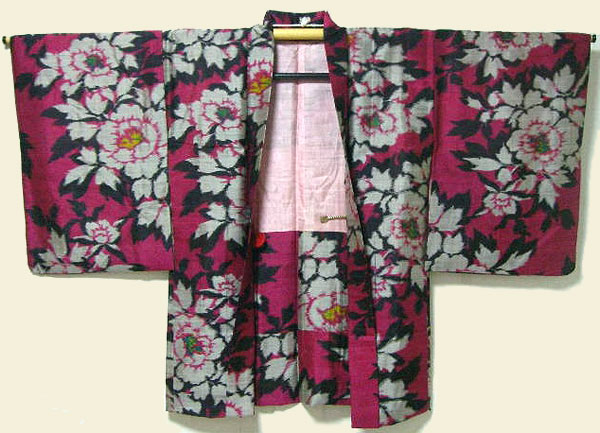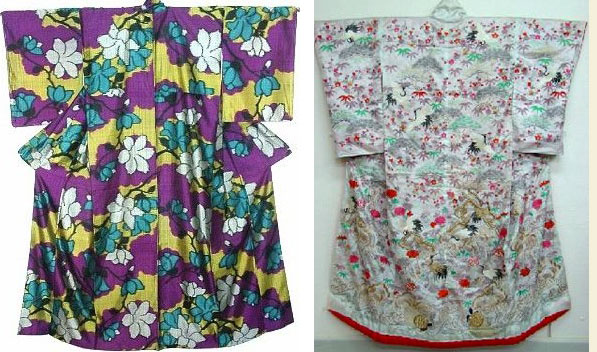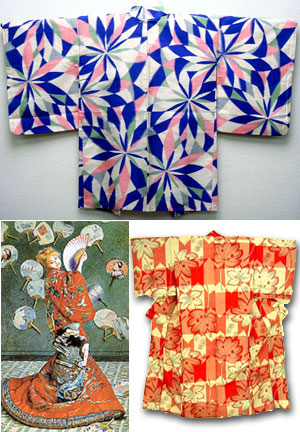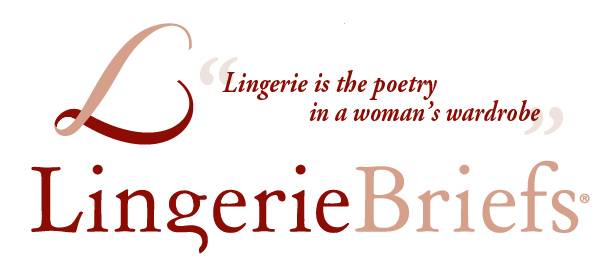Unwrapping Kimono’s Artistic Soul
By Marina Rybak

I always feel privileged to visit the home of my dear friend Alex Murray, an avid antique kimono collector with one of the finest collections outside of Japan. Every time I glance at the one-of-a-kind textile art objects, lovingly displayed and exalted on his interior walls, I gasp in admiration. Like the masterpieces on canvas, their beauty is transcending. What a clear reminder that my true kimono companion, literally embedded in my lingerie wardrobe by now, has the history of such original splendor and the legacy of such opulent artistic heritage.

The greatest artistic achievements in the one of the most recognizable pieces of clothing began in the 17th century during so called Edo Period where the kimono defined the status of the wearer. The reestablishment of the commercial trade between the East during the mid-19th century led to the exposure of the Japanese Arts and to the craze for all things Japanese in the West. The exotic kimono captivated European women. The renowned artists of the time were eager to paint them in fresh, new, exciting color palettes of the simple flowing shapes with asymmetrical patterns and designs.
 The artistic and liberating kimono elements were celebrated in the creations of the famed couturiers like Worth, Paul Poiret and Madeleine Vionnet. Ultimately the kimono became one of the inspirational forces that fueled the transformation of fashion.
The artistic and liberating kimono elements were celebrated in the creations of the famed couturiers like Worth, Paul Poiret and Madeleine Vionnet. Ultimately the kimono became one of the inspirational forces that fueled the transformation of fashion.
Fascinated with the manner kimono was worn in the authentic environment, I continued on my quest. Unwrapping kimono’s artistic soul further, I peeked into the ethereal, poetic and provoking world of the Japanese woodblock prints, which so profoundly influenced the Impressionist movement and the art movements that followed.
It is so natural to immerse yourself in the artistic genre, translated as “the pictures of the floating world” and get lost in its seductive allure. Coincidently, my curiosity to uncover the kimono images guided me to the breathtaking Japanese print exhibits, which are on view in the US right now.
Edo’s Fasionistas at the Minneapolis Institute of Arts till February 24 highlights the prints of beautiful women in their trendiest, and finest attire of that period. Visit Exhibit website.
The Arts of the Bedchamber at the Honolulu Museum of Art till March 17 is an insightful selection of prints, which focuses on the early fine examples of the Japanese erotic art. Visit Exhibit website.
Evidently, if you ever want to visit Hawaiian Paradise, there is one more reason to do so.


What a fabulous subject and so interesting and beautiful. Loved it.
go to this link and you will find some fantastic homemade kimono
http://www.flickr.com/photos/oozoux/sets/72157616436800040/
Many thanks Claude. Looking forward to this inspirational imagery